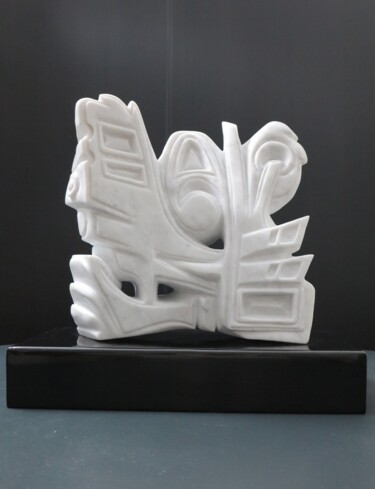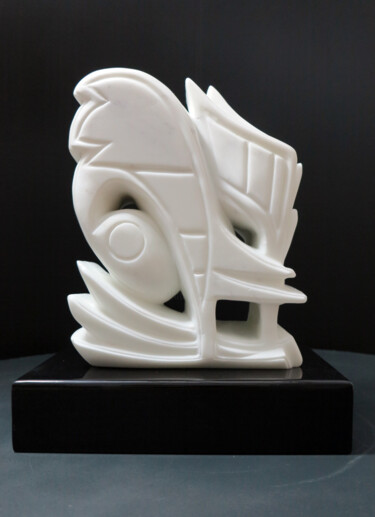27 原始当代雕塑待售:
石技术的起源是什么?
从吉萨的狮身人面像到米开朗基罗的大卫,再到米洛维纳斯,石雕是历代以来使用最广泛、应用最广泛的雕塑技术之一。所使用的不同石头的特性让雕刻家根据岩石的各种约束赋予他们的灵感:石头可以是软的也可以是硬的,这取决于是石灰石雕塑、砂岩雕塑、石膏雕塑、花岗岩雕塑、玄武岩雕塑或大理石雕塑。无论如何,石雕为观者提供了一种威严和不朽的感觉,就像一个护身符,可以抵御无情地传递给人类的时间的影响。
如何定义街头艺术风格 ?
Street Art is visual art produced in public spaces for viewing by the general public and is intended to spread a social and political statement. It has been referred to as "guerrilla art," "post-graffiti," "neo-graffiti," and "independent art." Street art is seen as the zenith of democratic art because it can be viewed by anybody and is not owned. Artists have introduced this unusual and democratic work into institutions and galleries throughout the past few decades, garnering recognition on a global scale and popularity in the "traditional" art world. The city and its residents have an impact on street artists' environment and sources of inspiration. Their main themes frequently examine ideas of popular culture, ads, cartoons, and urban settings. Street art is full of inventiveness and constantly looking for new techniques, supports, and materials, from the abstract to the figurative.
The fundamental idea behind street art is that everyone should have the opportunity to create art and have it seen by others, regardless of their race, age, gender, economic status, or other characteristics. It also believes that art should be accessible rather than hidden away inside galleries, museums, and private collections. Even though some street artists may make sculptures or installations, they are more well recognized for using uncommon art materials like wheat paste, spray paint, stencils, and stickers.
The most well-known artists of today developed their reputations on the streets. Graffiti artists like Keith Haring and Jean-Michel Basquiat, whose works were found on public walls as well as in galleries and museums, had a big impact on later generations of artists, particularly Banksy and Fairey. Street art has historically had a tense relationship with the art world as a whole due to its roots in illegal activity and distinctive interest in subversion, political, and social action.
Street Art sculpture
In sculpture, Street Art is a movement and a form of artistic expression characteristic of the late twentieth century, early twenty-first. Many sculptors have marked the history of this movement through his handling of volumes: this is particularly the case of Mark Jenkins and his hooded figures, but also of Isaac Cordal and his miniatures characters very critical of our social development, or the Gregos parisian with his persons making faces. Around the world, Street art sculpture continues to be a popular category of art and many of its creators have achieved renown and mainstream success.
Street Art Sculptors
Mark Jenkins (born 1970)
American artist Mark Jenkins creates sculptural street installations. Jenkins uses the "street as a theater" in his street art, allowing his sculptures to interact with the environment. With his hyperrealistic sculptures that he places in the streets across Europe and the United States, Mark Jenkins explores how people see the world. The staging is often uncomfortable and the faces of the people are frequently obscured. Since he wraps live figures in plastic films and tape, his technique is likewise hidden. The "cast" is then cut out, put back together without the figure, dressed, and given realistic features like hands and hair.
Gregos (born 1972)
French street artist Gregos began displaying his face on the buildings in Paris. He creates a reproduction of his face with his tongue out or smiling that he paints and adheres to the walls of Paris using his own 3D concept, which he designed utilizing all the techniques he had learned and refined over the years. Each face serves as a kind of self-portrait for the day, expressing the humor of the wearer and his past, present, and future.
The street art concept by Gregos is effective at encouraging conversation between the faces and among spectators. More than 500 faces have been installed so far, largely in Paris but also in other French cities and cities across the globe, including Europe, the United States, Japan, and South America.
Isaac Cordal (born 1974)
Isaac Cordal is a Spanish Galician artist who specializes in miniature art. His creations feature miniature animals built of cement, which is often thought of as the mark of civilization, and are positioned in unexpected places like gutters and puddles. Due to its small size (about 15 cm), finding them requires careful attention. They are frequently depicted in ordinary activities, and the setting choice can introduce new dimensions to the action. They typically highlight how ludicrous our current world is. The artist uses the sculptures as a metaphor to analyze politics, bureaucracy, and power.
Christiaan Nagel (born 1982)
Christiaan Nagel is a British street artist known for his oversized mushroom sculptures made from polyurethane which he places high up on buildings. They reach as far as Los Angeles, Cape Town, Berlin, Barcelona, London, New York, and Cape Town. These polyurethane mushrooms come in various sizes and individual samples or flocks. The artist claims that although mushrooms naturally develop, they require ideal weather and environmental circumstances, such as original artistic and scientific concepts.
如何在网上购买石雕?
你的房子急需一层新油漆和几件新艺术品吗?
现代雕塑有多种形状和材料可供选择,是照亮房屋室内设计的绝佳方式。
许多人喜欢抽象的石雕,可以在室内和室外展示。抽象石雕越来越受欢迎。
如果您正在寻找石雕,或者如果您正在寻找在线购买石雕的最佳地点,请继续阅读。别担心,我们在这里为您服务。
当您在互联网上搜索在线购买石雕的地方时,您会发现一些最受欢迎的现代石雕、大型石雕和乡村石雕在线商店。如果您正在努力想出一件新艺术品的想法,或者只是想为您的家居装饰增添一些多样性,请考虑将多种材料混合在一起。
考虑在墙壁设计中使用一块石头作为焦点,以增加它们的深度和纹理。继续阅读以了解更多关于石雕项目的顶级在线零售商的信息。
如果您正在寻找独特的室内或室外石雕在线购买,您可以在我们的 ARTMAJEUR.COM 网站上浏览适合您个人品味和空间需求的令人难以置信的石雕艺术品。
Discover contemporary artworks on ArtMajeur
Contemporary art is a vibrant constellation of artistic expressions. This creative universe encompasses a wide array of mediums, from paintings, sculpture, and photography to drawing, printmaking, textile art, and digital art, each medium a star shining with its own distinct radiance. Artists use diverse supports and materials to bring their visions to life, such as canvas, wood, metal, and even innovative digital canvases for the creation of virtual masterpieces.
A contemporary painting, for instance, may weave its story through the masterful strokes of acrylic or oil, while a contemporary sculpture might sing its song in the language of stone, bronze, or found objects. The photographic arts capture and manipulate light to produce striking images, while printmaking employs techniques like lithography and screen-printing to produce multiples of a single, impactful image. Textile art plays with fabrics and fibers, whereas digital art pushes the boundaries of creation with innovative technology.
The allure of contemporary art lies in its boundary-pushing nature, its relentless quest for experimentation and its constant reflection of the evolving human experience. This boundless creativity, coupled with its strong social and personal commentary, makes every piece of contemporary art a unique emblem of its time, a mirror held up to the realities and dreams of our complex world. It whispers to us, moves us, provokes thought, and kindles a deep emotional response, stirring the soul of anyone willing to listen. It is, indeed, the language of emotions and ideas, spoken in the dialect of our era.
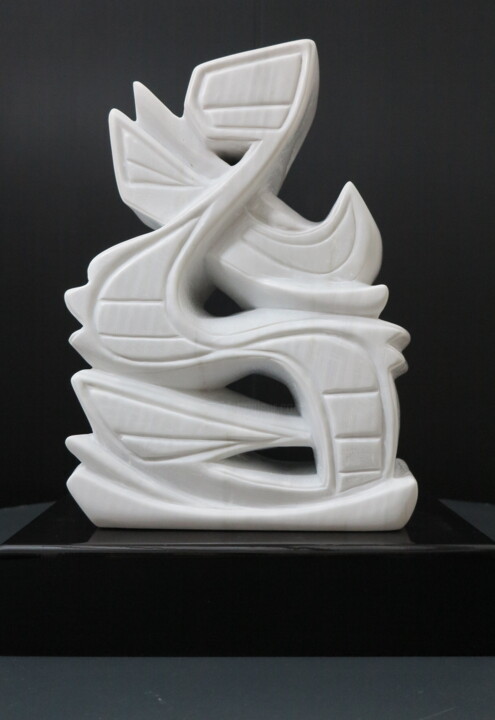
©2024 Sand
Origins and history of contemporary art
The story of contemporary art unfolds in the mid-20th century, marked by seismic shifts in artistic expression. Post-World War II, around the 1950s and 1960s, artists began experimenting beyond traditional confines, challenging the norms of what art could be. This revolutionary epoch birthed myriad new movements and artistic forms such as abstract expressionism, pop art, and minimalism. Paintings, once confined by realism, embraced abstraction, as artists used color and form to express emotions and ideas. Notable periods like the advent of pop art in the late 1950s and early 1960s saw artworks mimicking popular culture and mass media, reflecting society’s shifting focus.
The sculptural arts, too, witnessed a metamorphosis. Sculptors started to experiment with new materials and forms, often creating artworks that interacted with the viewer and the surrounding space, fostering a sense of engagement. Drawing, a timeless practice, also evolved, with artists incorporating innovative techniques and concepts to redefine its role in contemporary art.
Photography, a relatively new medium, emerged as a powerful tool in the contemporary art landscape. Born in the 19th century, it truly came into its own in the latter half of the 20th century, blurring the lines between fine art and documentation. Printmaking, a practice dating back to ancient times, saw renewed interest and experimentation with techniques like lithography, etching, and screen printing gaining prominence.
The realm of textile art expanded dramatically, as artists began to appreciate the versatility and tactile quality of fabric and fibers. Artists began using textiles to challenge the boundaries between fine art, craft, and design.
The dawn of digital technology in the late 20th century heralded a new age for contemporary art. Digital art emerged as artists started leveraging new technologies to create immersive, interactive experiences, often blurring the line between the virtual and the physical world.
Through these transformative periods, the essence of contemporary art has remained the same: a dynamic, evolving reflection of the times we live in, continually pushing boundaries and embracing the new, always questioning, always exploring.
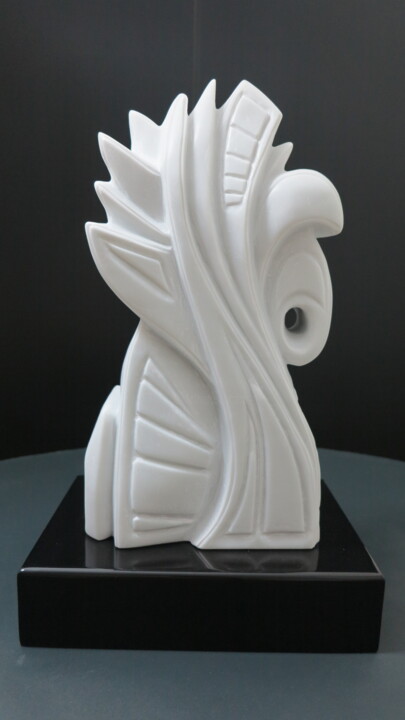
©2024 Sand
Evolutions of theses contemporary works in the art market
As we navigate through the 21st century, the dynamic landscape of contemporary art continues to evolve and expand, reflecting our ever-changing world. Contemporary paintings, once primarily confined to two-dimensional canvases, now embrace a multitude of forms and techniques, ranging from mixed media installations to digital creations, each piece a rich a weaving of thoughts, emotions, and narratives. Sculpture, too, has ventured far beyond traditional stone and bronze, with artists incorporating light, sound, and even motion, embodying the ephemerality and flux of the modern world.
Photography, in the hands of contemporary artists, has expanded its horizons, seamlessly blending with digital technology to create breathtaking imagery that challenges our perception of reality. Drawing, as well, has transcended the borders of paper, incorporating multimedia elements and exploratory techniques to redefine its role in the artistic discourse. Printmaking continues to flourish, with contemporary artists using traditional methods in innovative ways to deliver potent social and personal commentaries.
Textile art, once considered a craft, now holds a prominent place in the contemporary art world, with artists using it to explore issues of identity, tradition, and cultural heritage. Meanwhile, digital art, the newest member of the contemporary art family, has revolutionized the way we create and interact with art, presenting immersive experiences that blur the boundary between the virtual and the physical.
These diverse forms of contemporary art hold significant value in the current art market, not only due to their aesthetic appeal but also their ability to encapsulate and communicate complex ideas and emotions. Collectors, curators, and art lovers worldwide seek these works, drawn to their inherent dynamism, their innovative use of materials, and their eloquent expressions of our shared human experience. As a testimonial to our times, these contemporary artworks encapsulate the pulse of our society and the resonance of individual voices, forever etching our collective narrative into the annals of art history.
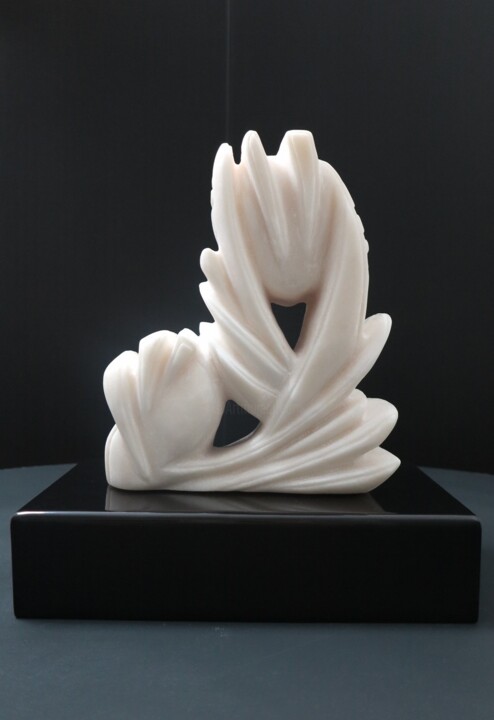
©2023 Sand
Famous Contemporary Artists
As we delve into the vibrant realm of contemporary art, we encounter an array of artists who shape this dynamic field. Each a master in their medium - painting, sculpture, photography, drawing, printmaking, textile, or digital art - they push artistic boundaries, reflecting our era and challenging perceptions. Let’s explore these remarkable contributors and their groundbreaking works.
1. Gerhard Richter - Known for his multi-faceted approach to painting, Richter challenges the boundaries of the medium, masterfully oscillating between abstract and photorealistic styles. His works, whether featuring squeegee-pulled pigments or blurred photographic images, engage in a fascinating dialogue with perception.
2. Jeff Koons - A significant figure in contemporary sculpture, Koons crafts monumental pieces that explore themes of consumerism, taste, and popular culture. His iconic balloon animals, constructed in mirror-polished stainless steel, captivate with their playful yet profound commentary.
3. Cindy Sherman - An acclaimed photographer, Sherman uses her lens to explore identity and societal roles, particularly of women. Renowned for her conceptual self-portraits, she assumes myriad characters, pushing the boundaries of photography as a medium of artistic expression.
4. David Hockney - Hockney, with his prolific output spanning six decades, is a pivotal figure in contemporary drawing. His bold use of color and playful exploration of perspective convey an intoxicating sense of joy and an unabashed celebration of life.
5. Kiki Smith - An innovative printmaker, Smith’s work explores the human condition, particularly the female body and its social and cultural connotations. Her etchings and lithographs speak to universal experiences of life, death, and transformation.
6. El Anatsui - A master of textile art, Anatsui creates stunning tapestry-like installations from discarded bottle caps and aluminum scraps. These shimmering, flexible sculptures blend traditional African aesthetic with contemporary art sensibilities, speaking to themes of consumption, waste, and the interconnectedness of our world.
7. Rafael Lozano-Hemmer - A leading figure in digital art, Lozano-Hemmer utilizes technology to create interactive installations that blend architecture and performance art. His work, often participatory in nature, explores themes of surveillance, privacy, and the relationship between people and their environments.
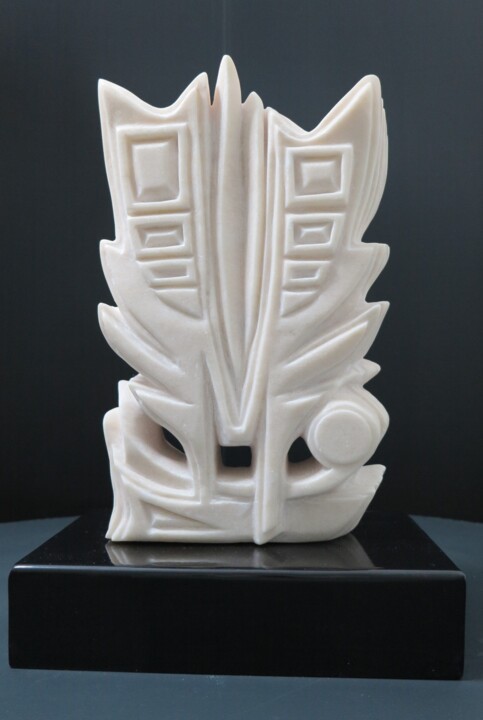
©2022 Sand
Notable contemporary artworks
The contemporary art landscape is a dynamic patchwork of diverse expressions and groundbreaking ideas, each artwork a unique dialog with its audience. Here are a selection of some renowned contemporary artworks, spanning various media such as painting, sculpture, photography, drawing, printmaking, textile art, and digital art, that have profoundly influenced this vibrant movement.
"Cloud Gate" by Anish Kapoor, 2006 - This monumental stainless steel sculpture, also known as "The Bean," mirrors and distorts the Chicago skyline and onlookers in its seamless, liquid-like surface, creating an interactive experience that blurs the line between the artwork and the viewer.
"Marilyn Diptych" by Andy Warhol, 1962 - An iconic piece of pop art, this silkscreen painting features fifty images of Marilyn Monroe. Half brightly colored, half in black and white, it reflects the dichotomy of celebrity life and its influence on popular culture.
"Rhein II" by Andreas Gursky, 1999 - This photographic artwork, a digitally-altered image of the Rhine River, is celebrated for its minimalist aesthetic. It strips the landscape to its bare essentials, invoking a sense of tranquility and vastness.
"Black Square" by Kazimir Malevich, 1915 - A revolutionary painting in the realm of abstract art, this piece, featuring nothing more than a black square on a white field, challenges traditional notions of representation, symbolizing a new era in artistic expression.
"Puppy" by Jeff Koons, 1992 - This giant sculpture, a West Highland Terrier blanketed in flowering plants, explores themes of innocence, consumer culture, and the interplay between high art and kitsch. It’s a delightful blend of traditional sculpture and garden craft.
"Re-projection: Hoerengracht" by Ed and Nancy Kienholz, 1983-1988 - A room-sized tableau representing Amsterdam’s red-light district, this work combines elements of sculpture, painting, lighting, and found objects. It engages viewers in a stark commentary on commodification and objectification.
"Untitled" (Your body is a battleground) by Barbara Kruger, 1989 - This photomontage, combining black-and-white photography with impactful text, explores issues of feminism, identity, and power. Its potent, confrontational message is a prime example of the power of text in contemporary visual art.
"For the Love of God" by Damien Hirst, 2007 - This sculpture, a platinum cast of a human skull encrusted with 8,601 diamonds, probes themes of mortality, value, and the human fascination with luxury and decadence. It’s a compelling blend of macabre and magnificence.
"Physical impossibility of Death in the Mind of Someone Living" by Damien Hirst, 1991 - This artwork, featuring a tiger shark preserved in formaldehyde, blurs the line between traditional sculpture and biological specimen. It prompts viewers to contemplate mortality and nature’s ferocity.
"One and Three Chairs" by Joseph Kosuth, 1965 - A piece of conceptual art, it presents a physical chair, a photograph of a chair, and a dictionary definition of a chair, thus exploring the relationship between language, picture, and referent in art.
These pieces, in their diversity, exemplify the rich tapestry of contemporary art, each piece a unique commentary on our world and a testament to the limitless potential of creative expression.
